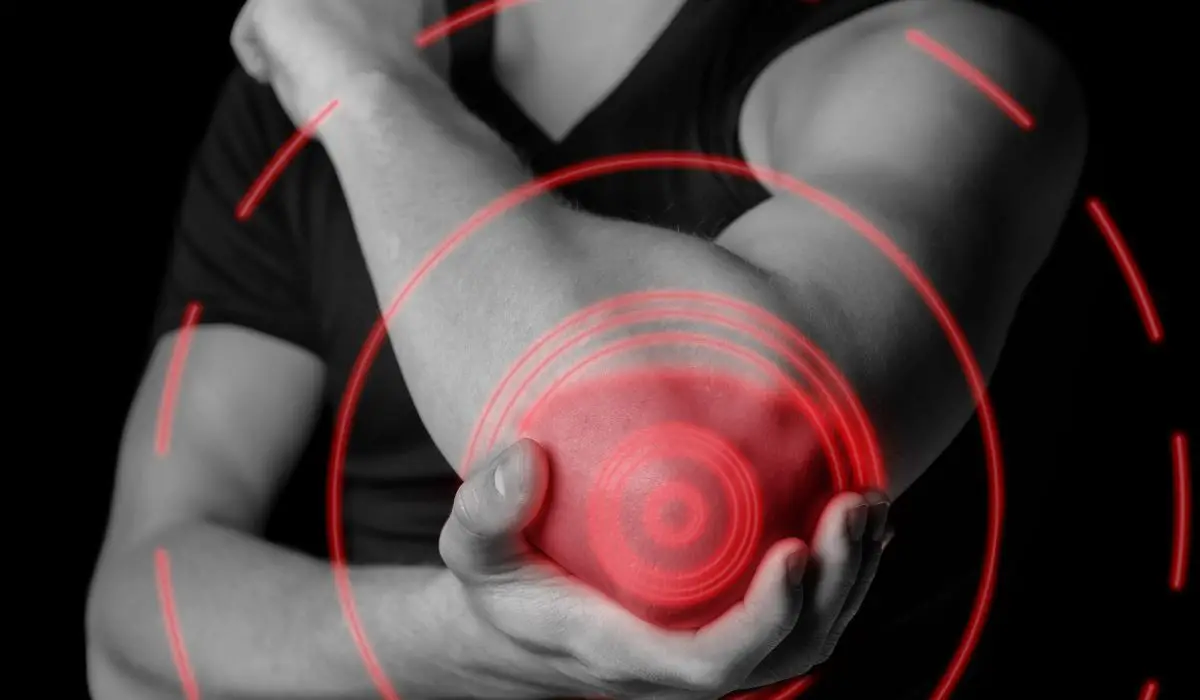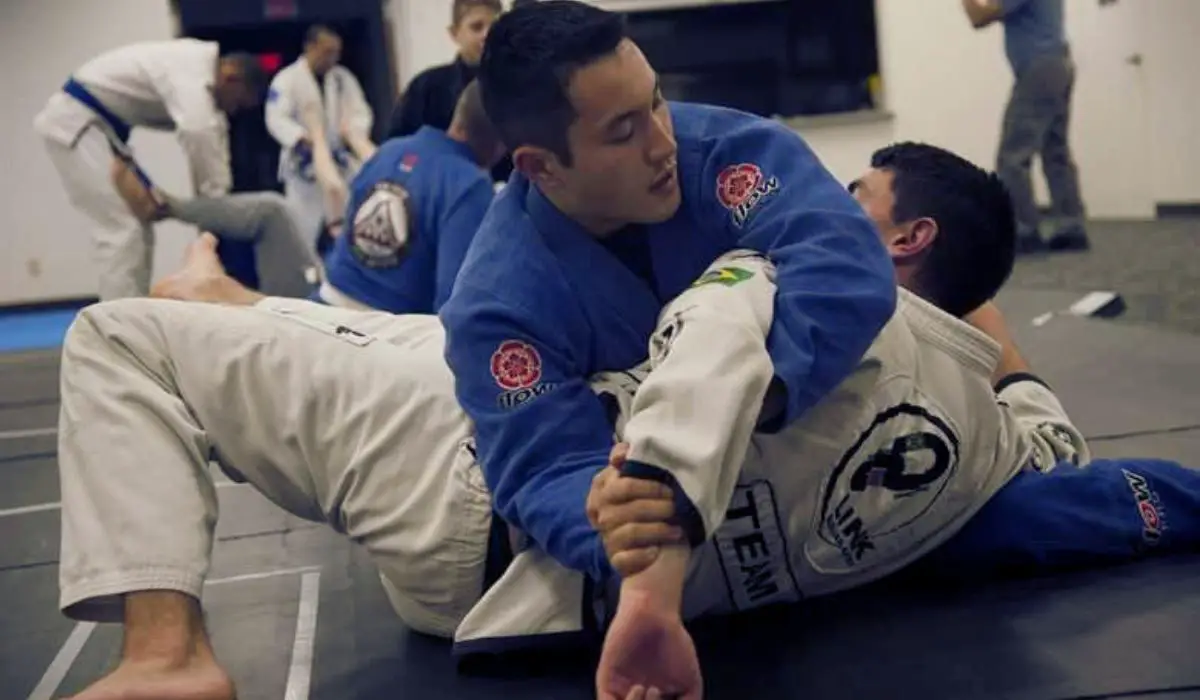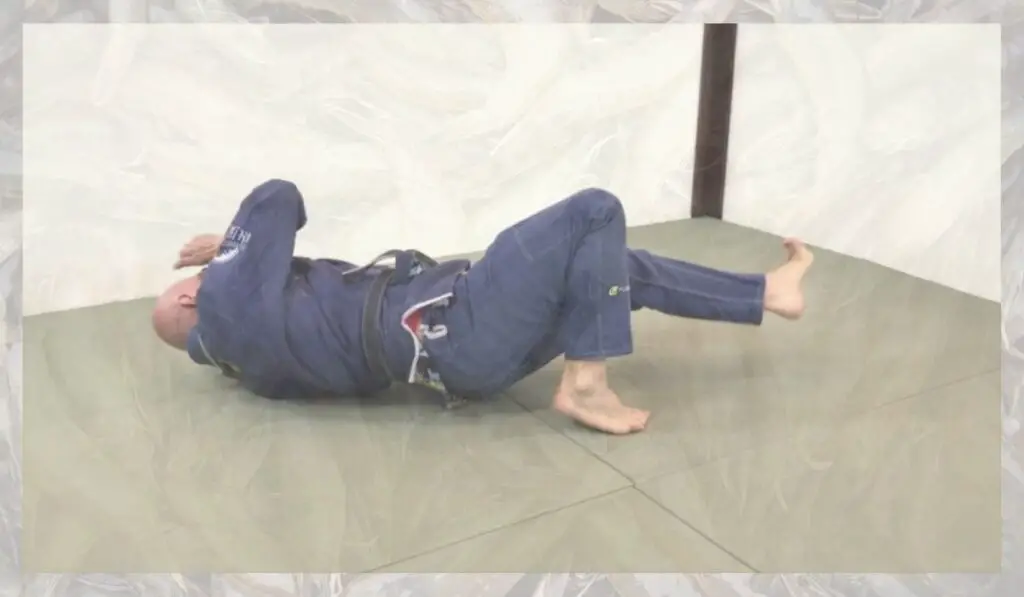Brazilian Jiu-Jitsu is one of the growing grappling martial arts. This ground-fighting discipline offers excellent exercise for increasing strength, flexibility, and cardiovascular health. However, even though people enjoy training in this martial art, elbow pain due to an injury may ruin their experience.
Unfortunately, elbow soreness is one of the most prevalent injuries in BJJ. This post will review the origins, symptoms, and treatment of elbow discomfort in Brazilian jiu-jitsu.
What Exactly Is BJJ Elbow Pain?

BJJ elbow pain is any discomfort, soreness, or inflammation of the elbow joint induced by Brazilian jiu-jitsu practice. The elbow joint comprises bones, ligaments, tendons, and muscles, which may be damaged when practicing this gentle martial art.
Brazilian Jiu-Jitsu Elbow Pain Causes

Elbow discomfort in Brazilian jiu-jitsu may be caused by a variety of factors, including:
- Overuse injuries: This is the most prevalent cause of elbow pain in BJJ. Microtrauma to the muscles, tendons, and ligaments may result from repetitive movements and severe strain on the elbow joint, resulting in inflammation and discomfort.
- Trauma: Direct elbow joint damage, such as falls or collisions while training, may result in fractures, dislocations, and sprains, leading to discomfort and edema.
- Inappropriate Technique: Elbow pain may also be caused by poor form and technique. Failure to tuck the elbows during an armbar or maintain the elbows close to the body during a triangle choke, for example, may place unnecessary strain on the elbow joint, resulting in pain and discomfort.
- Over Self-Rating: This is another aspect that might lead to elbow injuries in BJJ. When we have an inaccurate perspective of our skills and limits, we take risks and try techniques above our ability level. Over-self-rating is especially problematic in BJJ regarding submissions that place substantial strain on the elbow joint, such as armlocks and kimuras.
- Ego: When we allow our ego to rule our training, we may push ourselves past our limitations, overlook warning signals of damage, and refuse to tap out when we should. Unfortunately, this approach may lead to elbow injuries.
Related: You should know the potential health risks if you’re considering starting Brazilian jiu-jitsu. While BJJ can provide tremendous physical and mental benefits, it has drawbacks. Click here to read more!
BJJ Elbow Pain Treatment
The degree and nature of the damage determine the adequate therapy to reduce and eliminate the BJJ elbow pain and discomfort. Among the most prevalent healing options are:
- Ice and Rest: Pain and swelling may be reduced by resting the afflicted arm and administering cold packs to the elbow joint. It is critical to rest the injured arm and allow it to recover.
- Physical Therapy: Physical treatment may be advised to strengthen the muscles around the elbow joint, increase the range of motion, and avoid future injuries. A physical therapist may use massage, stretching, and exercises to manage discomfort and regain function.
- Anti-Inflammatory Mecidaments: OTC pain reliever may help ease pain and reduce inflammation. In addition, a doctor may prescribe more potent pain relievers or anti-inflammatory meds in certain circumstances.
Elbow Pain Prevention While Training in Brazilian Jiu-Jitsu
Avoiding elbow pain and discomfort in BJJ entails taking precautions to decrease the likelihood of damage. Some typical preventative techniques are as follows:
- Stretching and Warm Up Properly: Warming up and stretching the arm’s muscles and elbow joints before beginning BJJ training is crucial. This may help minimize injury risk and increase performance.
- Adopt Correct Posture and Techniques: Learning and practicing good form and technique can lessen the risk of elbow injuries. Drilling techniques properly is essential, and seeking your instructor’s help if you’ve doubts about the proper step up is a good approach to limit the risk of hurting your elbow.
- Cross-Training: A physical activity, like weightlifting or yoga, may increase your elbow’s general strength, flexibility, and mobility, lowering the chance of injury when practicing BJJ.
- Rest and Recovery: Allowing the body to recuperate between jiu-jitsu sessions and obtaining enough rest is critical for avoiding injuries and maintaining overall health and fitness.
- Visit a Doctor: You should consult a doctor if you have chronic or severe elbow pain, edema, or stiffness. They can determine the source of the discomfort and provide suitable treatment alternatives.
Related: Elbow Wraps vs Elbow Sleeves: Which is Better? Both are designed to help support and protect the elbows. However, they have different features that make them good for different situations. Click here to read more!
Common Elbow Injuries in Brazilian Jiu-Jitsu
Elbow injuries are common during Brazilian jiu-jitsu training (sparring, drilling, etc.). It will often happen when targeting techniques and submissions that cause severe elbow hyperextension, such as armlocks (straight armbar, American, and so on).
Here is a list of the expected elbow injuries you should avoid in Brazilian jiu-jitsu.
Tendonitis
Tendonitis is a type of swelling caused by repeated movements. It is painful tenosynovitis of the tendons. Therefore, what can you do to prevent this BJJ elbow pain?
Warming up correctly the affected area before any jiu-jitsu training session is the simplest way to heal tendonitis. Otherwise, you can use ice on the injured area after every training to reduce pain and accelerate healing.
If the tendonitis elbow injury is severe, seeking medical attention is best.
Dislocation
One of the most common Brazilian jiu-jitsu elbow injuries is dislocation. When a fighter is taken down hard or pushed into the ground, dislocations can occur due to resistance to submission maneuvers.
An elbow dislocation injury occurs when the elbow bone is pulled or pushed out of its normal position. So, how to contain elbow pain when a dislocation occurs?
Elbow dislocation can be a complex elbow injury. So, you should see a physician immediately when a dislocation occurs and get it treated. Besides, you should avoid fighting until the problem is resolved.
Bursitis
Bursitis is an elbow injury characterized by inflammation of the fluid-filled sacs known as Bursae due to Repeated elbow collisions. The bursae cushion the joints, reducing friction between moving bones, tendons, and muscles. Unfortunately, repeated collisions typically cause bursitis in the same area. So, how to stop elbow pain when bursitis occurs?
Applying ice to the affected area is a simple way to treat bursitis. Fighters may tolerate the pain of bursitis and continue training. But, it is best to avoid sparring and rest until the condition improves.
Elbow Fractures
Fractures are among the most severe injuries a person can sustain. They damage one’s career and can cost a lot of money.
Brazilian Jiu-Jitsu is not a soft fighting sport; it is highly technical and dangerous, and with danger comes risk. Even when professional fighters fight with extreme caution, they are prone to injury.
Elbow fractures are also among the most common injuries that have prematurely ended the careers of potential combatants. They are caused by a hard fall, bashing to the elbow, elbow twisting, or a strong push or pull. Elbow fractures cause severe pain as well as a large bruise.
Furthermore, Getting a plaster applied as soon as possible after a fracture is critical. Fractures take a lengthy time to heal and sometimes do not heal completely. Treatment for elbow fractures is costly, so it is recommended that you see a doctor for a checkup.
Elbow UCL Injuries
The UCL, also known as the Ulnar Collateral Ligament, is a ligament that can be injured while practicing or fighting. If a fighter in a combat sport suffers a ligament injury, it can be a huge setback. In addition, they take a long time to cure and sometimes do not recover completely.
Conclusion
BJJ elbow pain is a frequent ailment caused by overuse, trauma, or improper technique.
Warming up and stretching before training, employing a good technique, cross-training in other physical activities, and providing time for healing and rest are crucial in preventing and treating elbow pain after BJJ.
It is essential to get medical help from a trained healthcare practitioner if you have chronic or severe elbow discomfort. Most occurrences of elbow discomfort after jiu-jitsu may be treated and cured effectively with appropriate prevention and therapy.
Related: Whether you practice Brazilian Jiu-Jitsu or are thinking about starting, it’s essential to understand the possible injuries that come with it. This article teaches you how to avoid and manage injuries so you may continue training safely and efficiently.
Frequently Asked Questions

Does BJJ Induce Elbow Pain?
BJJ may induce elbow discomfort due to overuse injuries, trauma, or poor technique.
How Long Does It Take to Recover from Elbow Pain in BJJ?
The length of time it takes to recover from BJJ elbow discomfort is determined by the degree and source of the injury. Minor injuries may heal in several days to weeks, but more severe injuries may need many months of rest and therapy.
Can Elbow Braces Alleviate BJJ Elbow Pain?
Elbow braces may assist in minimizing pain and swelling by providing support and compression to the elbow joint. A doctor or physical therapist may suggest them as part of a complete therapy strategy.
Related: An elbow brace sleeve pad will keep you safe and comfortable throughout tough grappling sessions. Don’t allow elbow injuries to prevent you from reaching your objectives; click here to learn more!



